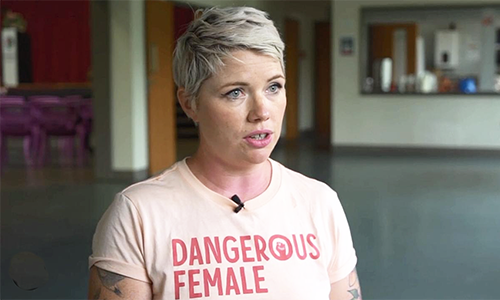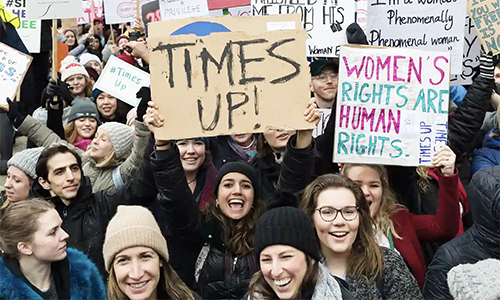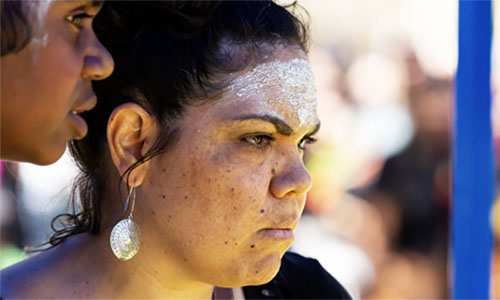
by BETTINA ARNDT – PREVENTABLE murder. That’s how the West Australian radio show promoted their recent program arguing for new laws to criminalise coercive control laws in that State.
The Relationships Australia manager interviewed for the program struggled to describe the type of controlling behaviour she was talking about, suggesting this could apply to a partner not liking a woman going out with her friends or spending money on herself.
- The growth of men locked up through DV breaches will pale once coercive control’s fast route to prison is operational.
- The future already looks grim for men but, rest assured, the move is on everywhere.
- Thankfully many of the men and women in blue seem to be resisting the feminist demand that they only charge men.
But the message was clear – locking up men for this type of controlling behaviour could prevent murder.
That’s how the concept of coercive control was first sold to the public in this country by the grieving parents of Hannah Clarke, a Brisbane mother killed with her children in a horrific family homicide.
RECRUITED BY FEMINISTS
These poor parents were recruited by the feminists to promote the argument that this family might not have died if coercive control laws had been in place.
This alleged link between coercive control and domestic homicide was used to push through the new laws in other States – even though this connection was never mentioned in the UK where the laws were introduced in 2015, nor was it claimed by the American feminist, Evan Stark, who invented coercive control.
“Let’s not forget that coercive control is the biggest predicting factor in intimate parent homicide,” said the Minister for Women Shannon Fentiman when introducing the bill for the new Queensland laws.
Well, the NSW Bureau of Crime Statistics and Research (BOSCAR) has just thrown a spanner in the works by announcing coercive control doesn’t even predict future violence, let alone domestic homicide.
The researchers used a “text-mining system” to capture behaviour associated with coercive control from 526,787 relevant police reports and used this measure to detect/predict domestic violence over the next 12 months.
The results were zip, zero. Coercive control simply did not predict future violence (pdf).
That research was published months ago but naturally it sank without a trace. No way most of our media was going to report a result that could derail the domestic violence industry’s latest weapon against men.
CONTROL
Unlike current domestic violence laws which usually require multiple breaches for a man to be sent to jail, the new criminal coercive control laws make that a very straightforward process.
In the next year or so, new coercive control laws will be rolled out in Queensland and NSW.
A Queensland barrister recently commented that lawyers in his State are “awaiting the tsunami” – as the first wave of coercive control allegations hits the courts, and lawyers try to stop men being sent to jail on these highly contentious charges.
It’s very telling that the new coercive control laws are being kept on ice in NSW and Queensland for years as authorities try to ensure the right people – namely men – get charged.
An ABC article just last month grumbled that “Tasmanian police are still mistaking family violence victims for abusers”.
Yes, police are still sometimes charging women instead of men. Shock, horror.
This “misidentification crisis” is occurring despite strenuous efforts to train police to only charge men. The article warned that the “crisis” is not isolated to Tasmania.
That is why, even though coercive control laws were passed in NSW last year, everything is on hold while authorities work feverishly placing female officers in police stations across the State to instruct their fellow officers in identifying the problem and the correct perpetrators.
Coercive control is a really slippery little blighter, with experts coming up with no fewer than 22 different definitions when trying to pin down what exactly we are talking about.
VILLAINY
But when it comes to this new brand of supposedly, solely male villainy, it’s hardly surprising that police officers across the country are finding that, as often as not, it is women who exhibit these behaviours – the Australian Bureau of Statistics has shown men and women are equally likely to experience emotional abuse and control from a partner.
It’s encouraging that many of the men and women in blue seem to be resisting the feminist demand that they only charge men.
It is also good to see coercive control being subject to scrutiny by researchers. But we need also to look at other aspects of domestic violence law and ask if they are doing their job.
Look at applications for apprehended violence orders, or AVOs, which are now a major part of the workload of magistrates everywhere.
A violence protection order was supposed to be a shield rather than a sword. It was supposed to be about protecting a person, usually a woman, from future violence, not a weapon to be used by an angry or disgruntled woman to destroy a man.
How come we so rarely even talk about whether it is doing a good job protecting vulnerable women?
Well, BOSCAR touched on this issue in a recent publication (pdf), which concluded that “although they are an integral part of the criminal justice response, there is limited rigorous evidence on the effectiveness of protection orders in improving DV-related outcomes.”
Too right.
The evidence base for our massive violence order system has always been mighty thin on the ground.
When most of our DV laws were introduced over a decade ago, the only study with a statistically significant result at that time was research involving phone interviews with 313 people in Seattle!
Not much has changed, even though there’s Australian research looking at reoffending rates for people on violence orders. With so many violence orders now based on false accusations used in family law battles, it’s nonsensical to suggest breaches tell us anything about the deterrent effect of a violence order, given that breaches are often set up as part of the false accuser’s strategy.
Plus, there’s the fact that we’re often not talking about physical violence, with violence orders now issued for emotional abuse, psychological abuse, financial abuse, spiritual abuse … the list goes on.
Knowing this, it is irritating reading these studies laboriously adding up rates of repeat offending and order breaches. These researchers are living in La La Land.
To put the whole thing in perspective, let’s look at just one State – Queensland. The Sunshine State, they call it.
SUNSHINE
Oh yeah? Queensland has more people locked up for breaches of violence orders than the rest of Australia put together. Not much sunshine for that lot.
Violence orders are already being issued at five times the rate of divorces. And this is a huge growth industry. The number of people imprisoned for breaches of these orders has gone up by 54 per cent in the past three years.
The future looks particularly grim for men in our Deep North but rest assured, the move is on everywhere. Violence orders are already scattered like vile confetti across the land.
Yet the growth in numbers of men locked up through breaches will pale into insignificance once coercive control’s fast route to prison is fully operational.PC












Appreciate the recommendation. Will try it out.
Hot investment tip for 2024: Cat farms.
They would soon be known as The Killing Fields.
Enter at own risk.